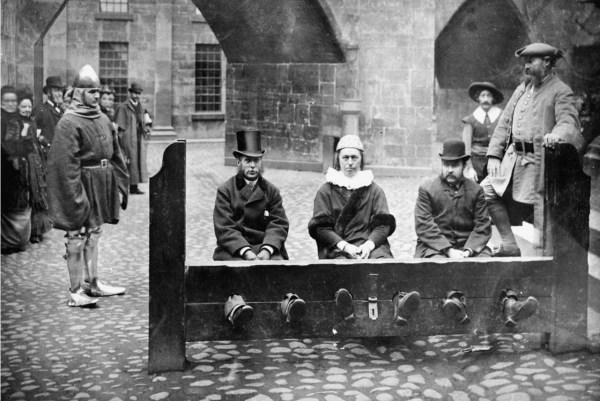It’s hard to believe that there was a time in this country, not too long ago, when public punishment and shaming took on a different, more physical form. These days both still continue – we’ve just replaced brandings, placing people in stocks or pillories and throwing rotten vegetables at them, or tying them to whipping posts to be flogged with various social media platforms.
I guess one could say we went from floggings via whipping posts to floggings via social media posts.
While the method may have changed, the love affair is still a steamy one, and the eager pursuit of finding targets persists. Is it human nature? Both are archaic practices only separated by time and in my opinion, a bit sadistic and the world would be better off without them. In addition, often the mob exacts their brand of “justice” on the wrong target, but once that fervor is whipped up there is rarely a turning back and rescinding of the order.

Anyhow, I seriously doubt the practice will ever die out. There is no time in human history that war, punishment, and taxes didn’t exist and it’s unlikely to change any time in the near future.
But it’s not fun in any way or practical to spend time philosophizing and condemning the social mores of a particular Zeitgeist, so let’s check out some of the methods that we Americans utilized since the first Europeans landed on our shores to as recently as 1932. Yes, 1932 was the last time a pillory or stocks was used in America before the practice was abolished unlike in England where it is no longer practiced outside of charity events, but has not been abolished. In 2012 in Colombia, an amorous pair, one 39-year old female and her 18-year old “boy toy” were placed in stocks for 72 hours because the woman was married and committed adultery.
What are the differences?
First an explanation of the devices – no, not today’s stocks, pillories and the whipping posts called Facebook, Twitter, and Instagram but the various, incredibly creative ways mankind invented to publicly torture folks. Imagine what could have been if we had used that time, energy and creativity to create beneficial things?
The words stocks (short for stockades) and pillories conjure up people with their hands and/or feet trapped in a public square and their faces exposed for all to see and if one was feeling particularly “virtuous” they could spit upon their targets, throw dirt, vegetables, fruit or even human waste.

Even crueler is that locals were allowed to go right ahead and punch or kick the trapped “criminals,” paddle them or whipping their feet with a switch. I guess it would be subjective, but some were “tortured” by having their feet tickled. For those who don’t see that as punishment, have never been held down by a bigger sibling and tickled until they pee their pants and beyond.
Typically they were used to shame people for minor offenses, retain those awaiting trial, or as actual punishment for the more serious crimes. Depending on the society – Old World or New World – it was classism at its worst singling out the poor or lower class and not something to which the rich were subject. How’s that for privilege for the “1%ers”? But fear not, in some segments of society, even the wealthy weren’t immune as the banner image shows.
 New Bedford Guide Your Guide to New Bedford and South Coast, MA
New Bedford Guide Your Guide to New Bedford and South Coast, MA







